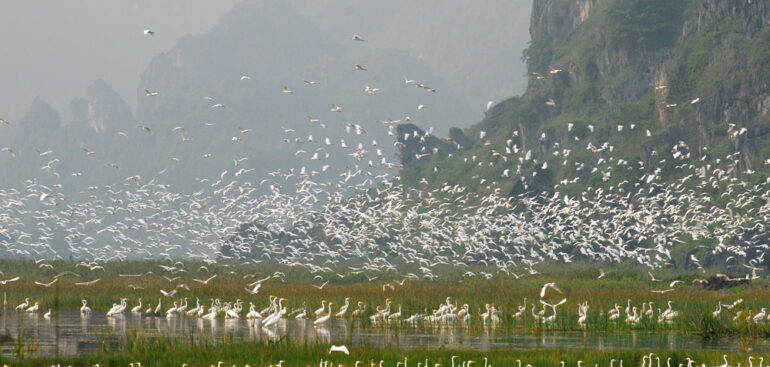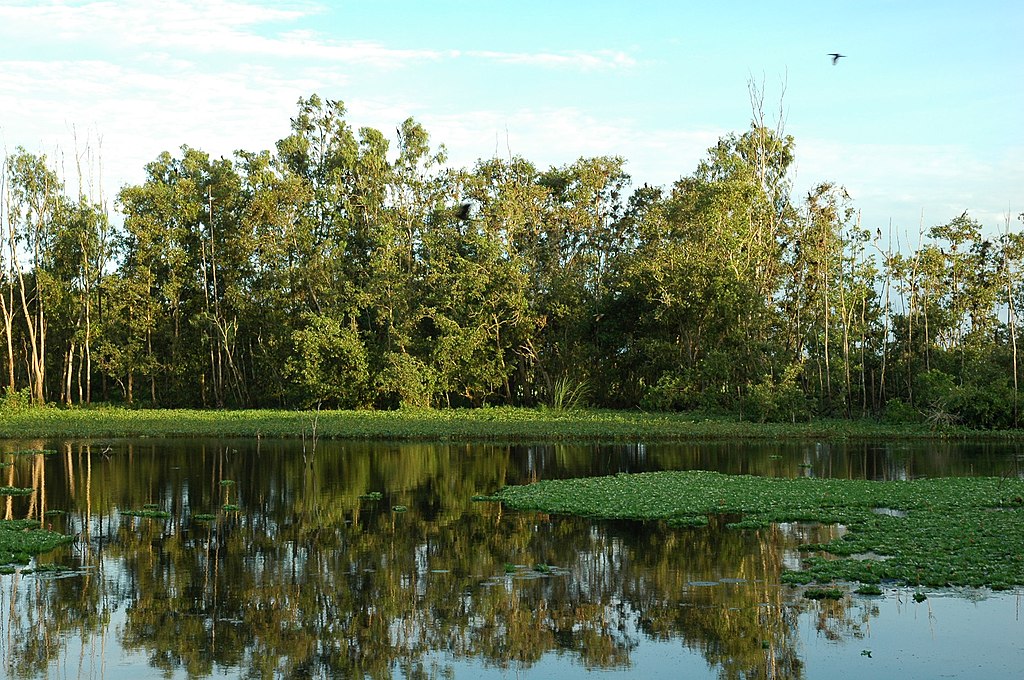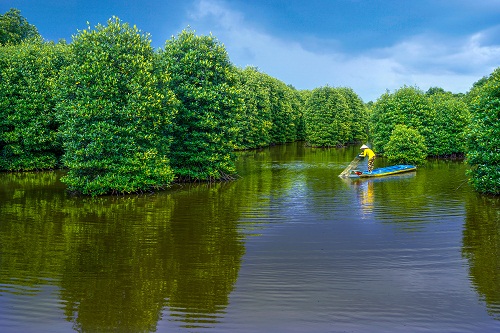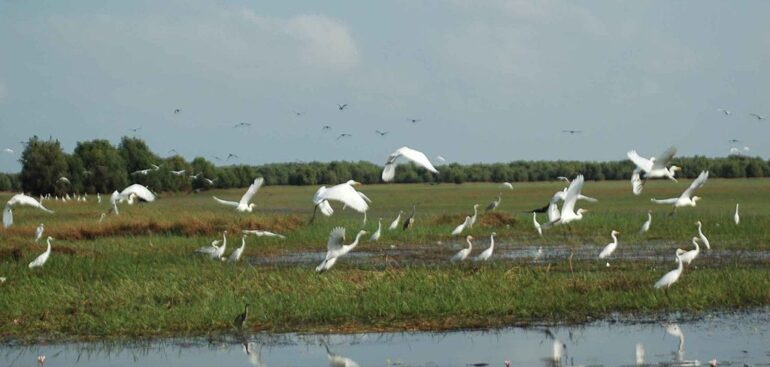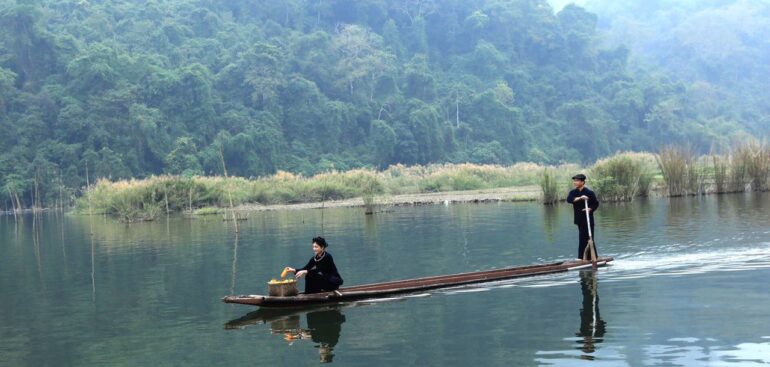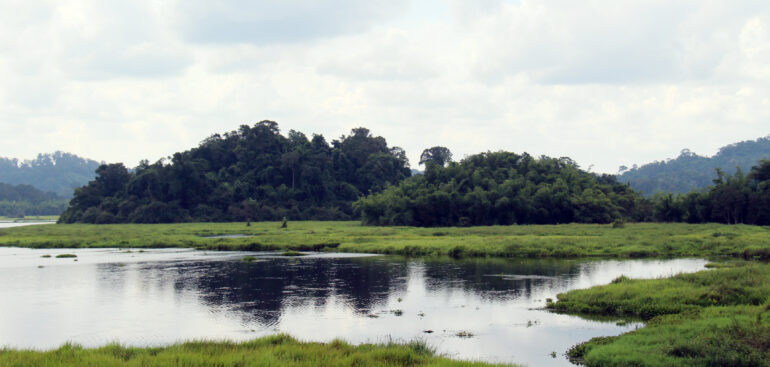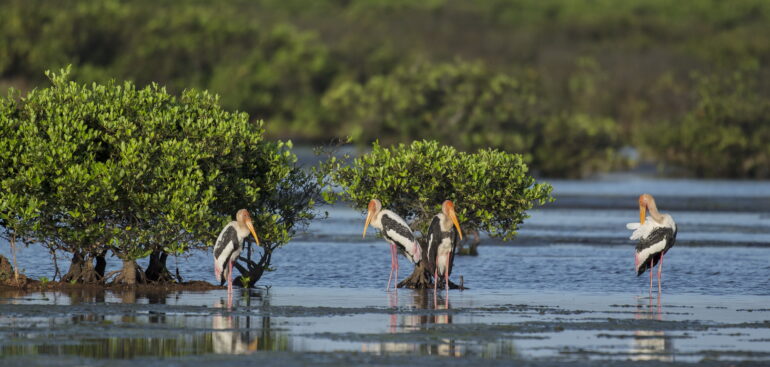The conservation areas have international status
Ramsar
The Convention on Wetlands of International Importance (Ramsar Convention) was signed in the city of Ramsar, Iran in 1971. This is an intergovernmental agreement that provides an operational framework for Action Plans. National mobilization and international cooperation on conservation and wise use of wetlands and resources from wetlands. This Convention took effect in 1975 and to date, 171 countries have become members of the Convention and recognized 2,418 Ramsar sites with an area of 254,563,791 hectares. The Ramsar Convention is not part of the system of environmental conventions and treaties of the United Nations and UNESCO. This Convention is solely responsible for the Conference of the Parties (COP) and world administrative affairs shared by IUCN from its headquarters in Gland, Switzerland. The mission of the Ramsar Convention, adopted by Parties in 1999 and revised in 2002, is: “Conserve and wisely use wetlands through local, regional and national action. participation and international cooperation to contribute to achieving sustainable development goals worldwide”.
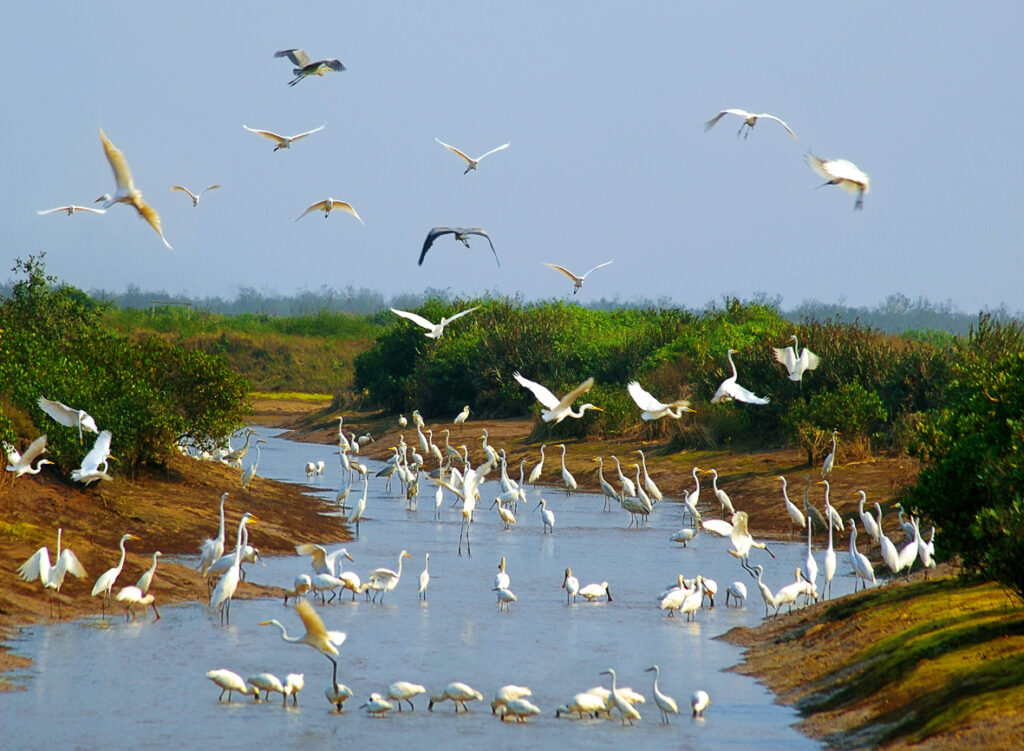
Chickens and birds in RamSa Xuan Thuy area (Nam Dinh) – Photo provided by the National Park
According to the Ramsar Convention, a wetland is considered for recognition as a wetland of international importance if the wetland meets at least one of the following criteria:
– Criterion 1: contains a sample that is unique, rare and representative of a natural or near-natural wetland type found in a special biogeographical region.
– Criterion 2: is a place to nurture critically endangered, endangered or endangered species, or threatened ecological communities.
– Criterion 3: is a place to nurture populations of animal and plant species that are important to maintaining the biodiversity of a special geographical area.
– Criterion 4: is a place that plays a supporting role for animal and plant species that are in a decisive stage in their life cycle, or provides shelter for these species when they encounter dangerous conditions.
– Criterion 5: is a place that regularly supports 20,000 or more waterbirds.
– Criterion 6: is the permanent residence of more than 1% of the population of a species or subspecies of waterfowl.
– Criterion 7: supports a significant proportion of native species, subspecies or families of fish, life history stages, interactions between species and/or representative populations for the benefits and/or values of wetlands and thus contribute to global biodiversity.
– Criterion 8: is a place that provides an important food source for fish species, is a breeding and nurturing place and/or migration route through which fish species can reproduce in wetlands or other areas. different depending on specific conditions.
– Criterion 9: is a place that regularly supports 1% of a species or subspecies of animals and non-avian animals that depend on wetlands.
In 1989, Vietnam was the 50th country in the world and the first in the ASEAN region to officially join the Ramsar Convention. Procedure for nominating a Ramsar site
The current nomination of Ramsar sites is carried out according to the following steps:
– Identify areas with potential to become Ramsar sites based on the criteria of Ramsar sites according to the provisions of the Ramsar Convention;
– Prepare a nomination file for a Ramsar site at the request of the Convention Secretariat, clarifying the criteria to meet a Ramsar site;
– Organize consultation and complete the dossier, submit it to the Ministry of Natural Resources and Environment and the Government for consideration and approval of the Ramsar site dossier nomination;
– Submit to the Convention Secretariat for consideration and recognition of the Ramsar site and organize the management of the Ramsar site after recognition.
The Ministry of Natural Resources and Environment is the national focal point to organize the appraisal; through the Nomination Dossier of Ramsar Sites and work with the Ramsar Convention Secretariat to consider recognizing Ramsar Sites in Vietnam.
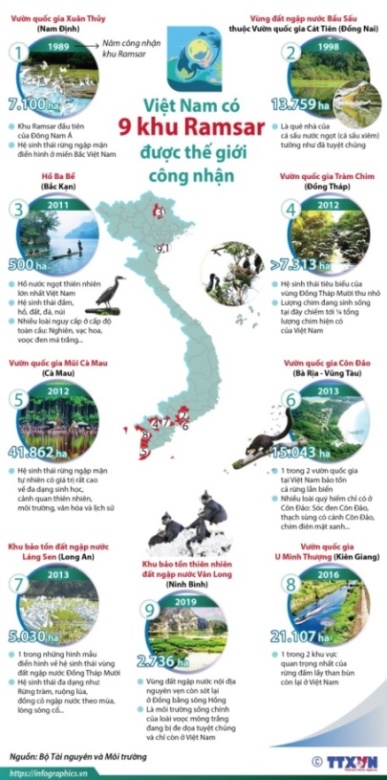
Figure 1. Map of Vietnam’s Ramsar Sites




